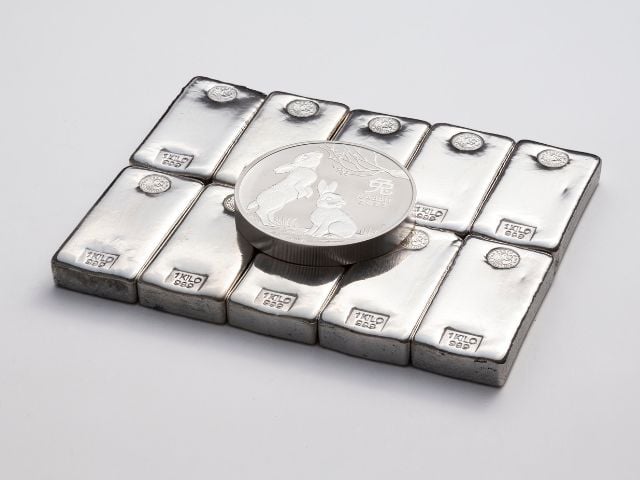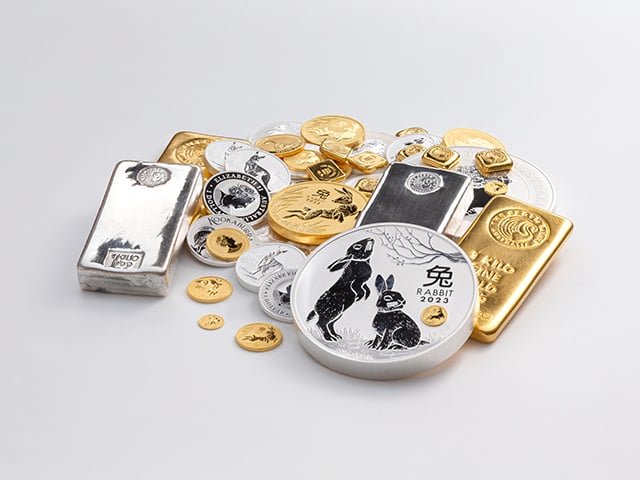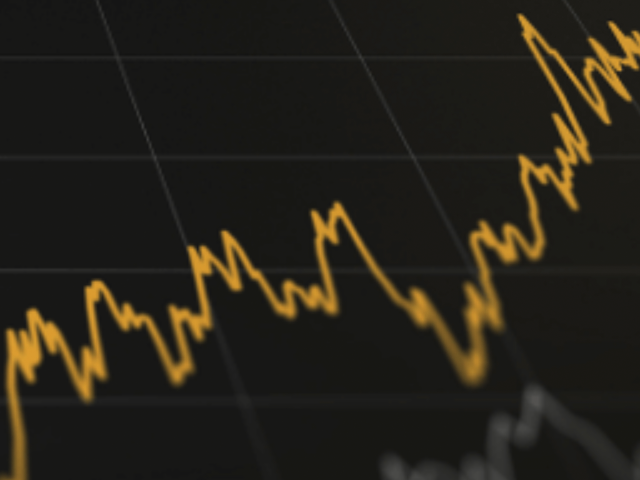Why are SMSF trustees investing in gold?

Holding gold as part of a diversified portfolio can offer numerous benefits to self-managed super fund (SMSF) trustees, especially in times of uncertainty, and many are opting to allocate 5-10%, in some cases more, of their portfolio to gold.
We cover the five key reasons investors may wish to include the precious metal in their portfolio.
1. Growth over the long-term
One of the primary reasons investors purchase gold is because the price of gold has risen by an annual average of almost 9% since the early 1970s. Historically, the precious metal has generated strong long-term returns, both in absolute terms, and relative to other asset classes.
This is illustrated in the table below, which highlights the returns of a range of asset classes including gold over multiple time periods to the end of 2021.
ASSET CLASS RETURNS (%) OVER MULTIPLE TIME PERIODS TO END 2021
Asset class
1 year
3 year
5 year
10 year
15 year
Since end 1999
Gold
2.1
11.2
9.5
5.3
7.9
8.2
Australian shares
17.2
13.6
9.8
10.6
6.2
8.4
Cash
0.0
0.5
1.1
1.9
3.1
3.8
Bonds
-2.9
2.9
3.4
4.2
5.2
5.6
Median superannuation fund (growth strategy)
13.4
10.5
8.5
9.4
6.3
6.8
Source: World Gold Council, The Perth Mint: https://www.gold.org/goldhub/data/gold-returns
The table makes it clear that gold has either nearly matched or in many cases exceeded the returns generated by more traditional investments.
2. Market leading performance in low interest rate environments
In today’s low interest rate environment, one of the most pressing issues for many investors is what to do with their cash holdings.
In Australia currently, real interest rates are still negative, with The Reserve Bank of Australia (RBA) holding the official cash rate at just 1.35% (even after the increase in July), while the official inflation rate hit 5.1% in Q1 of 2022.
This means much of the money Australian households, including SMSF trustees, have in cash is losing value in real terms.
Even with the predicted upward trajectory of interest rates throughout 2022, this environment is likely to be supportive of gold, with more than 50 years of market history demonstrating that the precious metal has typically delivered very strong returns in the years when real interest rates were 2% or lower.
Two key drivers help explain why gold has delivered such strong absolute and market leading relative returns in these environments.
- Low or even negative real interest rates are typically only implemented as a form of monetary stimulus when the economy is weak or softening, as has been the case for the last two years given the threat posed by COVID-19. In such environments it’s natural that investors adopt a more defensive approach, seeking out safe haven assets such as gold.
- If the real interest rates investors like SMSF trustees can earn from cash or short-term bonds are low, or even negative, like they are today, then the opportunity cost (in terms of income foregone) of investing in gold is significantly reduced or completely eliminated.
Given the outlook for monetary policy, and the current yields available on traditional safe haven assets, gold’s historical outperformance in low real interest rate environments could well persist for much of the coming decade.
3. Protection when it’s needed most
Investors often allocate a portion of their portfolio to gold as they see it as the asset most likely to rally in those periods that equity markets and other “risk” assets experience heightened volatility or major corrections.
There is a good reason gold has developed this safe haven status, as it has tended to be the best performing individual asset whenever equity markets experience sharp falls.
A look back at the performance of gold and the local equity market in Q1 of 2020 is the most recent example of this. Back then the ASX 200 suffered an almost 30% decline in one month as fears over COVID-19 and the measures taken to limit its spread caused a huge decline in economic activity. Over the same period the price of gold in Australian dollars rallied more than 20%, helping to protect the portfolios of investors with an allocation to the precious metal.
The performance of gold during this time was not an anomaly. Instead it was a continuation of a trend, with the precious metal typically serving as an excellent hedge against falling equity markets. Indeed, historical studies highlight the fact that gold has typically outperformed all other asset classes in environments where stock markets have fallen fastest.
4. Foreign currency diversification
Gold provides a form of foreign currency exposure, and therefore diversification, for SMSF trustees.
Though not always the case, this foreign currency element will often enhance the protective qualities that gold can bring to a portfolio
This is due to the fact that during ‘risk off’ environments, when share markets are falling, the Australian dollar also tends to decline versus the US dollar, magnifying the gains and therefore protection gold can offer.
What happened during the GFC just over 10 years ago clearly illustrates this. In 2008 the Australian equity market fell by more than 40%, while the price of gold in US dollars rose by just over 4%.
Australian dollar gold investors not only benefitted from that 4% rise in the US dollar gold price, they also gained from the drop in the value of the Australian dollar, which fell by almost 20% that year. Consequently, the return Australian investors generated on their gold holdings was more than 28%, helping them protect their overall portfolios and wealth.
5. Gold is simple and easily accessible
A final driver of demand for gold is its simplicity and accessibility as an investment. Gold in particular is:
Easy to invest in
Gold is incredibly easy to purchase, store and sell. One of the most popular ways to access gold today is via listed products, including Perth Mint Gold (ASX ticker code PMGOLD). PMGOLD trades like regular shares on the ASX and can be bought and sold via a stockbroker or standard share trading account.
Gold can also be bought direct through The Perth Mint via depository accounts (which allow for trading online, over the phone or via email). Depository holdings are backed by physical gold, the safekeeping of which is guaranteed by the Government of Western Australia.
The Perth Mint provides regular valuations of these holdings, including at the end of the financial year, allowing SMSF trustees to meet their reporting obligations.
When it comes to selling, this can also be done over the phone or online 24 hours a day, allowing investors to purchase and liquidate their holdings when it suits their needs.
There are no lock up periods, no opaque fee structures, no derivatives or underlying instruments when it comes to the gold itself.
Accessible to all investors
Australian investors can buy gold valued from as little as AUD 50, which is the minimum trade size for The Perth Mint’s Depository Online solution. The Perth Mint’s ASX-listed gold product, PMGOLD, ended June 2022 trading above AUD 26 per unit, and is typically subject to the same minimum investment amounts as regular shares.
Low cost and liquid
Daily turnover in the global gold market typically averages in excess of USD 150 billion / AUD 212 billion, making it one of the most liquid asset classes on the planet. This is important for investors as it means that it is very easy to buy and sell gold quickly, without impacting the price.
The following table illustrates this, highlighting the average management expense ratios (MER) and trading spreads for a range of asset classes that can be purchased via ETFs on the ASX, as well as the average of the entire ETF sector. The table makes it clear that gold is at the low end of the spectrum from a cost perspective.
MANAGEMENT EXPENSE RATIOS AND TRADING SPREADS FOR ETFS
Asset class
Average management fee (% per annum)
Average spread (% per trade)
Currency
0.82
0.25
Infrastructure
0.68
0.29
Global Equities – Asia/EM/Sector
0.62
0.31
Commodities (ex gold)
0.64
0.57
Australian Equities
0.56
0.25
Average of all ETFs
0.55
0.27
Property
0.51
0.23
Fixed Income – Global
0.45
0.25
Mixed Asset
0.36
0.23
Global Equities
0.29
0.16
Fixed Income – Australia
0.24
0.13
Australian Equities – large cap
0.21
0.07
PMGOLD
0.15
0.09
Source: ASX Investment Product March 2022
Subject to minimal execution risk
The Perth Mint defines execution risk as the risk that the performance an investor generates from their investment within a certain asset class is different to the performance of the asset class itself, over the given time period. As gold is an entirely homogenous asset class, every investor who owns gold will generate the same return. A comparison with other asset classes helps demonstrate why this makes gold a simpler investment with less execution risk than other mainstream asset classes.
How to include gold in your SMSF portfolio
As the price of gold has risen by an annual average of 9% since the 1970s, holding gold as part of a diversified portfolio can offer benefits to self-managed super fund (SMSF) trustees. If you’d like to know more about the advantages of investing through The Perth Mint visit www.perthmint.com
DISCLAIMER
Past performance does not guarantee future results. The information in this article and the links provided are for general information only and should not be taken as constituting professional advice from The Perth Mint. The Perth Mint is not a financial adviser. You should consider seeking independent financial advice to check how the information in this article relates to your unique circumstances. All data, including prices, quotes, valuations and statistics included have been obtained from sources The Perth Mint deems to be reliable, but we do not guarantee their accuracy or completeness. The Perth Mint is not liable for any loss caused, whether due to negligence or otherwise, arising from the use of, or reliance on, the information provided directly or indirectly, by use of this article.
















